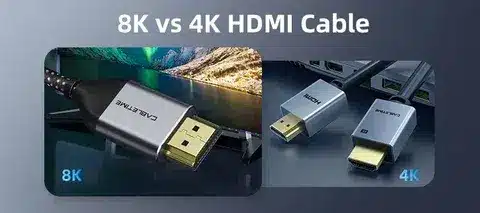Learn the difference between 4K and 8K HDMI cables and how to select the right one to use in your system. The secrets behind HDMI standards, bandwidth, future-proofing your entertainment system, and more.
Introduction
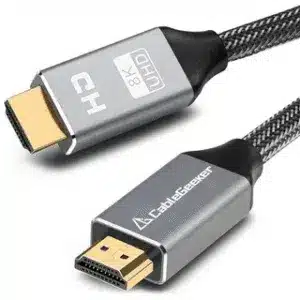
Wanted to know why your new 8K TV was not offering the desired picture quality? You have invested in the latest display technology, yet the picture still looks poor relative to what you had anticipated. The offender may be under your nose – your HDMI cable.
Selecting the appropriate HDMI cable is essential in order to achieve the maximum performance of your entertainment system. Regardless of whether you are a regular viewer, professional gamer, or home theatre enthusiast, knowing the difference between 4K and 8K HDMI cables can make a significant difference in your viewing pleasure. In this detailed overview, you will learn about the essential differences between 4K HDMI cables and 8K HDMI cables, so you can make the most out of your investment in high-resolution technology.
Understanding HDMI Cable Basics
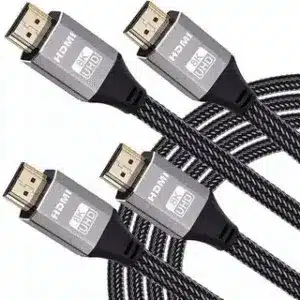
What is HDMI?
The HDMI (High-Definition Multimedia Interface) is the future digital interface that will link your machines together with the same high-definition cable line that digitizes both audio and video. This latest innovative technology enables the possibility of numerous cables and yet provides an ideal signal quality between the source and display.
Evolution of HDMI Standards
The HDMI 1.4 upgrade to HDMI 2.1 is indeed a revolution when it comes to connection capacities. The HDMI 1.4 also introduced 4K, but only in HDMI 2.0, with a bandwidth doubled to 18.2 Gbps. This HDMI 2.1 game-changer could achieve a data rate of an enormous 48 Gbps and support 8K resolution, improved frame rates, and additional game capabilities, including Variable Refresh Rate (VRR) and a more robust Audio Return Channel (eARC).
4K HDMI Cables
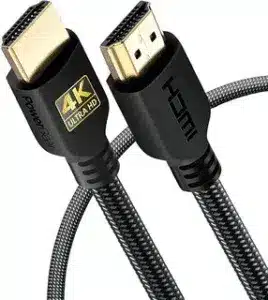
Resolution and Bandwidth
The 4K HDMI cables boast amazing resolutions of 3840×2160 pixels and 18.2 Gbps. This specification not only ensures that 4K content can easily flow at the traditional frame rates, but also has 4 times the number of pixels as the traditional 1080p displays.
Use Cases
The cables may host many applications and can be used with 4K televisions, game consoles, such as the PlayStation 4 Pro and the Xbox One X, streaming devices, such as the Apple TV 4K and the Roku Ultra, and professional monitors. Being contact 4K material and not requiring high-powered play capability would be resourceful to the consumers who happen to watch 4K material most of the time.
Limitations
But 4K HDMI cables are limited to working with higher frame rates or features. They can have problems with 4K content at 120Hz refresh rates and do not have access to newer features such as eARC to support audio return or VRR to provide a more seamless gaming experience.
8K HDMI Cables

Resolution and Bandwidth
The 8K HDMI cables are a masterpiece in HDMI technology because they can support the most beautiful resolutions, 7680×4320 pixels, and a massive bandwidth of 48 Gbps. The specification allows executing content with 16 times the resolution of 1080p displays to produce photographs that are truly detailed and realistic.
Use Cases
These are the best HDMI cables to use in the game because they are used in both 8K televisions and in next-generation game consoles, such as PlayStation 5 and Xbox Series X, high-end PC gaming systems, and pro video production hardware. They are also of quite significant importance to users who want to future-proof their entertainment systems against future technological changes.
Advanced Features
The 8K HDMI cables leave the doors open to newer features, such as supporting 4K 120Hz frame rate output to support ultra-smooth gaming, the eARC protocol enables audio transmission with no loss to soundbars and AV receivers, and VRR technology eliminates screen tearing and stuttering during gaming.
Comparing 4K and 8K HDMI Cables
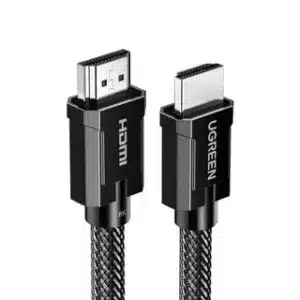
Bandwidth Comparison
The difference in bandwidth is large and significant. Whereas the 4K cables run at 18.2 Gbps, the 8K cables have a speed of 48 Gbps, which is close to three times faster than the existing data transmission speed. This additional bandwidth is directly converted into support of higher resolutions, higher frame rates, and other features that can improve your entertainment.
Feature Support
The latest features that 8K cables allow are not supported by 4K cables. They offer superior audio quality with eARC, competitive gaming with VRR, reduced input lag with Auto Low Latency Mode (ALLM), and advanced HDR with support of dynamic HDR, which changes brightness scene-to-scene.
Future-Proofing
By investing in 8K HDMI cables, it is guaranteed that they will be compatible with new technologies in the long term. With more and more content creators moving to create 8K content and streaming services growing their high-resolution content lines, the correct cable infrastructure will be necessary to receive such a high-quality experience without further upgrades.
Choosing the Right HDMI Cable
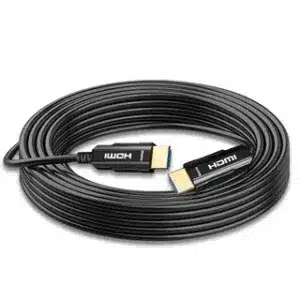
Assess Your Needs
Begin with an assessment of your existing and intended device capabilities. Things to consider are the highest resolution that your TV can display, do you play competitive games that could use high refresh rates, and do you have audio gear that uses a more advanced format, such as Dolby Atmos via eARC.
Certification Matters
Always find cables that are certified by the HDMI Licensing Administrator. The certifications are Premium High Speed 4K applications and Ultra High Speed 8K capabilities. Certified cables are heavily tested to meet performance standards and provide reliable transmission of signals.
Top Recommendations
When buying HDMI cables, pay attention to the manufacturers that have a good reputation and offer clear specifications and certification information. Seek out cables that will provide the right length to suit your installation and still keep the signal intact. Take into account such criteria as the quality of buildings, the stability of connectors, and the warranty to be satisfied in the long term.
Common Myths and Misconceptions
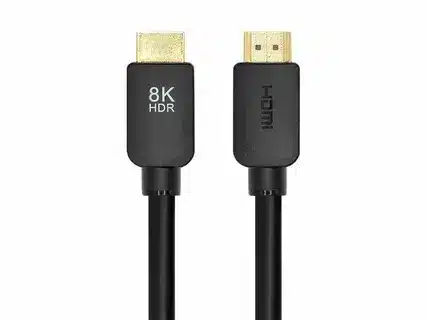
“Any HDMI Cable Will Do”
Such an ignorant mindset may severely limit your entertainment experience. A signal might be possible with some of the basic HDMI cables, but not what your devices can actually do. Poor quality cable can result in poor image quality, audio loss, or complete inability to use certain features and resolutions.
“Older Cables Are Sufficient”
Users are most likely to think that they can use their old HDMI cables with their new equipment, but older cables lack the bandwidth or other features to support new equipment. Newer displays and sources are 4K, and cannot be used with HDMI 1.4 cables such as the one shown.
Always use expensive Cables
It is not only the price that determines cable quality or performance. Focus on the proper certification and specification rather than high prices. A certified medium-priced cable can easily achieve higher performance than an expensive uncertified cable. The secret here is to choose the features that suit what you need specifically in the cable rather than what costs extra, which corresponds to added functionality.
Conclusion
Understanding the distinction between 4K and 8K HDMI cables will help you make an informed investment of your money in entertainment. Even though 4K HDMI cables have remained the best in terms of experiencing the normal 4K, 8K HDMI cables are more future-proofed and come with new features that enable better gaming and experience good quality sounds. A hardware implementation, such as increased frame rate, increased audio returns, and increased displays, would require the large bandwidth of -18.2 Gbps to -48 Gbps.
When making your choice between the two alternatives, you should consider your current situation and plans, and equipment. Certified 8K HDMI cables will be compatible with both current and future technologies when building a new entertainment system or upgrading an existing one. Remember also that proper certification is not about the cost, but about the correct cable specification that can give you an optimal viewing and gaming experience.

